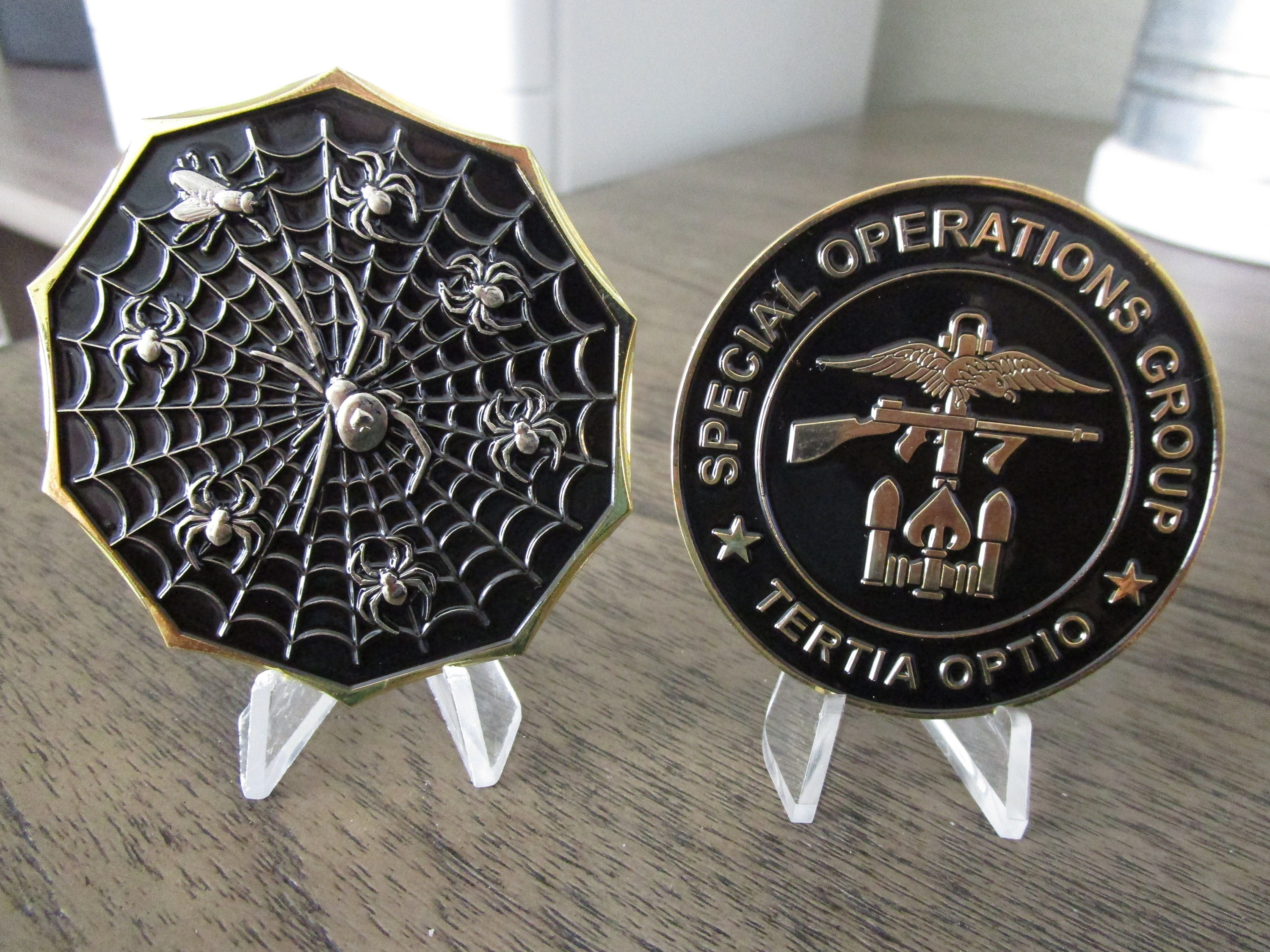
Upon discovery of the squadron medallion, he was recognized as an American and later returned to his unit. The French, who retained him, thought he was a spy. The pilot eventually escaped his German captors and made his way back to France. He was stripped of all personal belongings and identification by the Germans and only had his personal clothing and a small leather pouch that contained a squadron coin inside. One day, a pilot was shot down over Germany and later captured by German soldiers and held captive as a prisoner of war. He presented the coins to each member of the squadron before they departed on missions over Europe. One particular story dates military challenge coins back to World War I (1914-1918) and a wealthy military officer who had bronze medallions struck with his flying squadron insignia stamped on them. The Romans were among the first to stamp precious metals into coins, and given their veracity of large-scale military forces, why not bestow upon the Romans the mythological origin of challenge coins. The payment of legionnaires in pressed, metal coins is likely the first recorded military challenge coin in the history of warfare and, if not, it’s a good place to begin. They were often rewarded handsomely by the emperors of Rome for their exploits in battle, as it was in the best interest of the emperor to keep his military force well financed.

#Cia challenge coin professional
The legionnaire was not always a Roman citizen, but often mercenaries who fought for payment of their professional skills. The Roman Emperor Maximus was one such leader who also had legionaries who fought for Rome. While the specific origin of military challenge coins may never be known, we can certainly trace its history back to the first stamped coinage of the Roman Empire and its legionnaires.ĭuring ancient times, kings and emperors shaped precious metals with their image as currency for the exchange of goods and services.

Today, we’ll explore the history of military challenge coins, examine their possible origins and explain how military challenge coins have made their way into the White House, the United States Congress and the highest levels of the Pentagon, as senior government leaders have pressed their own challenge coins to present to well-deserving recipients. Regardless, challenge coins are fun to give, receive and display. The traditions of unit challenge coins date back to the World Wars, but their true origin is steeped in myths and legends. He who is last or without buys the first round. Then, there is the time-honored tradition of slamming your unit challenge coin down in bars to see who has theirs. Moreover, challenge coins–specifically in military units–demonstrate “proof of membership” and affiliation with a specific unit or element extending esprit de corps and morale in its proud members. Challenge coins are a great way to boost morale, identify allegiance and are a terrific way to extend one’s appreciation by saying “thank you” with coin in hand and a firm handshake. But there’s no doubt that military challenge coins are a big part of military culture and increasingly so in the civilian world. The history of military challenge coins is widely debated, and their origin is rooted in the history of civilizations from the Romans to the American colonials.


 0 kommentar(er)
0 kommentar(er)
